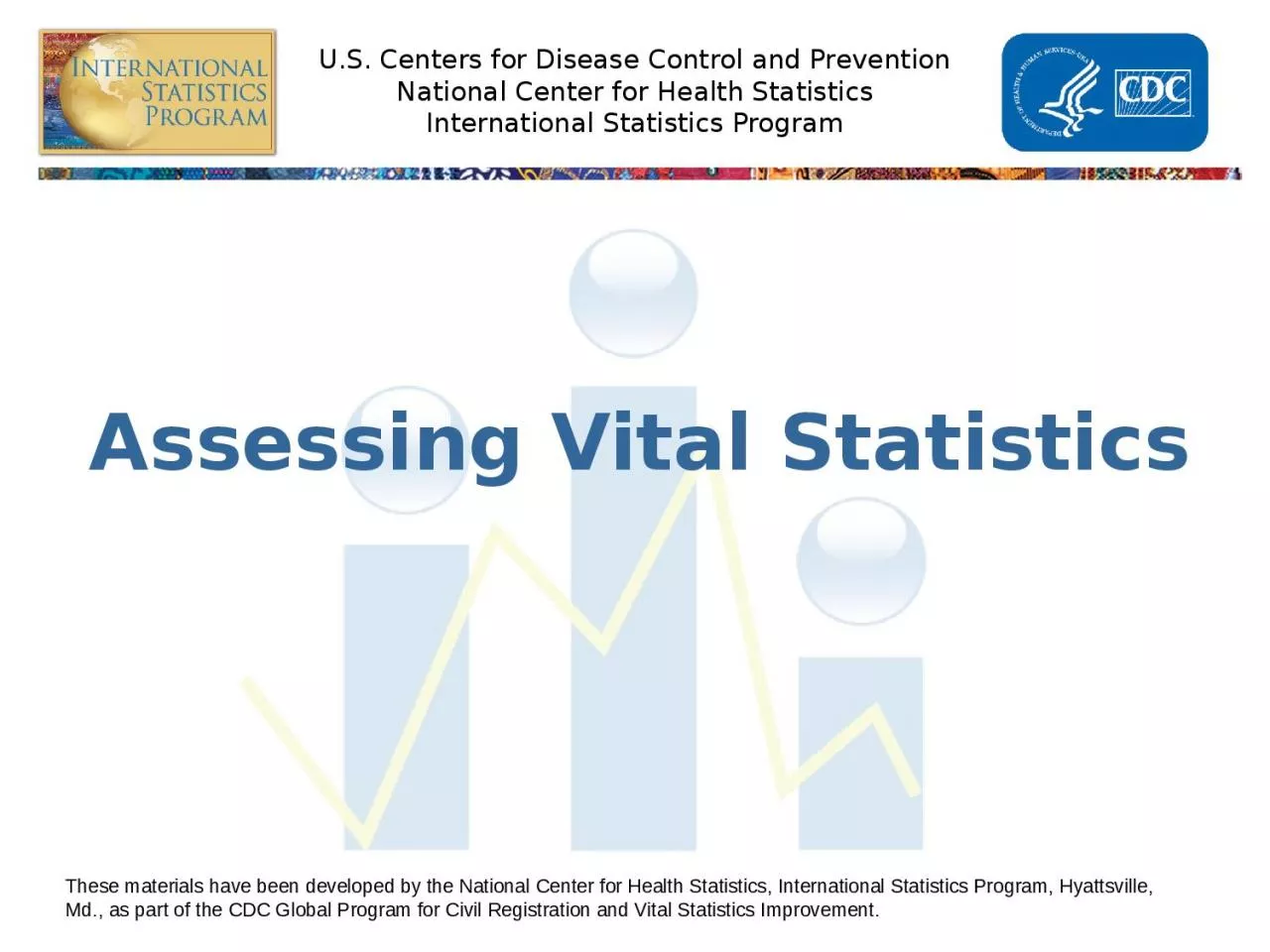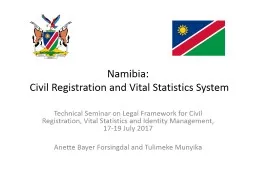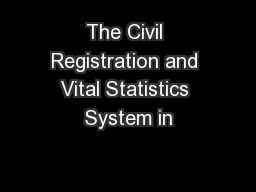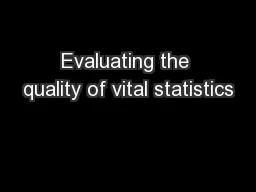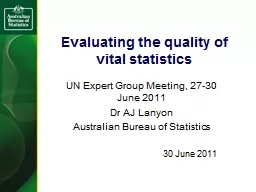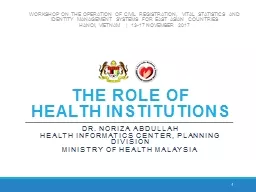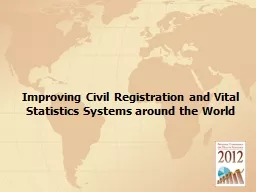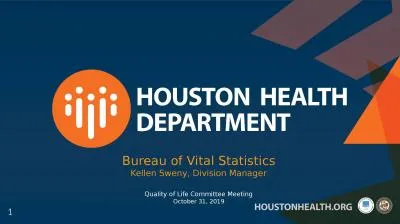PPT-Assessing Vital Statistics
Author : udeline | Published Date : 2024-01-29
These materials have been developed by the National Center for Health Statistics International Statistics Program Hyattsville Md as part of the CDC Global Program
Presentation Embed Code
Download Presentation
Download Presentation The PPT/PDF document "Assessing Vital Statistics" is the property of its rightful owner. Permission is granted to download and print the materials on this website for personal, non-commercial use only, and to display it on your personal computer provided you do not modify the materials and that you retain all copyright notices contained in the materials. By downloading content from our website, you accept the terms of this agreement.
Assessing Vital Statistics: Transcript
Download Rules Of Document
"Assessing Vital Statistics"The content belongs to its owner. You may download and print it for personal use, without modification, and keep all copyright notices. By downloading, you agree to these terms.
Related Documents

